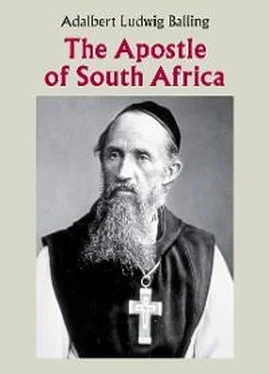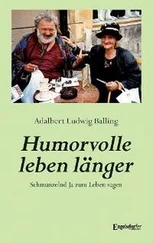Abbot Francis:
“How little did I dream then that one day I would live in a land where the most luxurious cacti grow wild like the nettles in Europe! I had collected some thirty species and by grafting them one on another top of another I produced spectacular forms: balls, snakes, rocks and exotic shapes. I also had the exquisite Eriesy. From books I read I knew that it produced an enchantingly beautiful blossom. So when I found a bud on my specimen I was beside myself with excitement. Why, I even postponed a trip to Munich just to see it open!”
Fr. Pfanner traveled to Agram by train, via Landshut, Linz (where he visited his former professor Franz Joseph Rudigier, now bishop) and Vienna.
Confessor to Nuns and Convicts
We may wonder why he was given an appointment for which we feel he was not cut out. The explanation may be found in Brixen. There, his vicar general had consulted the seminary staff and been told by the rector of the Redemptorists, who knew Fr. Pfanner from parish missions, that he was not only a fine pastor but also an excellent confessor. Or was there another reason?
Abbot Francis:
“It was known to everyone in Brixen that I was a tough fellow and that sometimes people, including nuns, needed a firm hand. Whichever, I ended up in Agram …. As was my habit I said Mass quickly. Therefore the young priests at the convent and perhaps also the one or other Sister did not pin too much hope on the new confessor. They said: ‘Short suit (cassock worn in Vorarlberg), short Mass’ … There were three other priests in residence: the superior, four years my senior and like myself from the Brixen Diocese, a young preacher and a still younger teacher, both Croatians and lecturers at the seminary. We took meals together but otherwise had each our separate apartment. The Sisters cared for me in every regard and paid me a handsome salary besides.”
Fr. Pfanner’s main responsibility in Agram was to hear the Confessions of the Sisters, preach a German homily every Sunday and teach Religion at the convent school. When one day the chimney caught fire on top of the priests’ house, it was the Vorarlberger, practical and fearless as ever, who climbed the roof and from a window in the attic directed the water supply to the top. It was his day! The Sisters admired him for his courage and skill and changed their attitude towards him.
In the Croatia of the early eighteen-sixties (1860/1861), as in many other European countries, the desire for national identity and unity was not to be suppressed any longer. The urban elite, consisting mainly of professors and students, shouted the much-heard slogans clamouring for “national consciousness” and civil liberties.
Abbot Francis:
“Vienna had tried far too long to Germanize the Croatians; now they turned the tables on the Empire. Their aversion to ‘Swabians’. (Germans) was so great that in their coffee houses they used the then fashionable German top hats as spittoon bowls.”
Although Fr. Pfanner and his Austrian fellow priest were allowed to stay and the latter kept a very low profile, Wendelin continued undaunted to hear Confession at the various institutes run by the Sisters and four times a year also at the high security prison of Lepoclava.
A Pilgrim-Tourist in Rome
Early in 1862, Confessor Pfanner read the announcement that the first forty-two Japanese Martyrs were to be beatified in Rome. It was a rare and exciting opportunity to see the Eternal City! In no time he was ready to go. He spent eighteen days in Italy. His first visits were to the ancient shrines. By sheer luck he also caught a close glimpse of Pope Pius IX, an episode he later recounted together with other adventures.
Abbot Francis:
“I left the house before dawn and did not return before ten in the evening. Determined to waste no time, I took something to eat at a roadside coffee house or trattoria, whichever was more convenient and not at the pensione . In this way I was able to explore all four quarters of the City according to a plan I drew up. But very soon I got around without it. Despite the Roman heat I tramped to the Seven Major Churches in and outside the City in one day!”
Once when he came near the entrance of the Sistine Chapel he chanced upon a group of ladies and gentlemen assembled there, all elegantly dressed in black. Inquiring what was going on, he was told that the pope was celebrating an anniversary Mass for his predecessor, Gregory XVI. Entry was strictly by ticket. Too bad! But there must be a way of getting around the ticket, even though he only wore a short soutane instead of the long cassock customary in Rome. He tried:
“I walked over to one of the two young Swiss Guards, smiled and said: ‘Nu, an Landsma weret ihr do inne lo?‘. (You surely allow a countryman to enter, don’t you?) Though trained to keep their face straight, these guardians of the law in their stiff halberds could not supress a smile. Before I knew, one lifted the curtain just enough to call to the captain inside: ‘A Landsma!’(a countryman). The captain understood at once, batted his eyelashes and motioned to me to come forward. I was not asked twice but made my way into the Chapel. Once inside, I walked with all the self-assurance I could muster among the elite of the Roman clergy and aristocracy, all in top array, standing there at attention. And because the clergy was stationed in front of the laity, I ended up right behind the cardinals. These knelt in a semicircle around the altar, the pope himself kneeling by himself on a raised platform. Not for a mint of money would I have changed places with anyone! I was privileged not only to see the Sistina, but also to listen to Gregorian chant, the authentic Roman chant! … You see, even a blind hen sometimes finds a grain of corn! I thanked God that my mother did not speak standard German with us, or else I would not have got in there.”
Always a pastor and a witty one at that, Abbot Francis adds a practical application:
“So also will it be at ‘heaven’s door’ when the end of the world is upon us. Whoever does not have the right ticket will not get in, unless perchance he speaks a known language or happens to be a countryman of Saint Peter!”
Still in Rome, a chance cropped up to see a little more of Italy. A group of tourists were about to set off on horseback to Mount Vesuvius. Anyone was welcome to join. As usual, Wendelin’s mind was made up immediately. Leaving Naples, it was he who led the group up the mountain. What was Vesuvius compared with Vorarlberg’s summits? He was the first one on top and, reckless as usual, stood so dangerously close to the crater’s mouth, that the others shouted to him to be careful. The edge was crumbly and the crater had spat fire only six months earlier!
Back in Agram, Fr. Pfanner reviewed his Italian experience. He had spent much time at the tombs of the Apostles, pondering what he should do with the rest of his life. His health was not good and the atmosphere in Croatia, hostile. Perhaps he should enter a monastery and spend the few years remaining to him in prayer and penance to prepare for death? The thought stuck. Soon it was only a question of which Order to choose, the Franciscans or Jesuits.
While he was still undecided, two men in brown garb came to the convent door. They were Belgian Trappists begging for alms for their monastery. This was towards the end of 1862. Fr. Pfanner’s curiosity was roused by the strange apparel of the monks and until late that evening he questioned them about their Order and lifestyle. “Trappist” – the very name mesmerized him. Then and there he decided: “I will rather die from penance [as a Trappist] than from studies [as a Jesuit]!” That very night he wrote two letters, one to his bishop to dispense him from the diocesan ministry; the other, to Mariawald in Prussia, the only Germanspeaking Trappist monastery, to apply for admission. The Prior replied by return post: “Come!” Our would-be candidate was happy but wondered if he had included enough information. So he wrote again, this time also mentioning his two hernias and his voice which might not be an asset to the choir. Abbot Francis: “The second reply took a little longer and was perhaps also a little more reluctant than the first.”
Читать дальше












